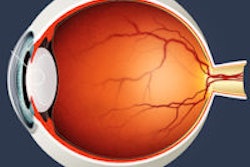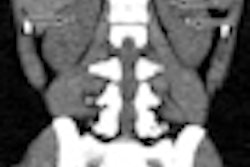VIENNA - The use of iterative reconstruction significantly reduces radiation exposure to the eye lens in head CT exams, investigators from the Czech Republic reported on Monday at the 2012 European Congress of Radiology (ECR).
Owing to its well-established association with the development of cataracts, there is little controversy about the need to minimize eye lens dose in CT exams. The research team found that the use of image reconstruction in image space (IRIS) (Siemens Healthcare) reduced the eye lens dose by a third without diminishing image quality. Results are expected to be similar with the use of Siemens most recent iterative reconstruction algorithm known as SAFIRE.
One of the best ways to reduce radiation dose in clinical practice is by the use of iterative reconstruction, said Dr. Jan Zizka from Charles University, Hradec-Králové, in the Czech Republic in his presentation.
"The purpose of our study was to compare the effective and mainly the organ dose to the eye lens in MDCT cerebral exams using either standard filter back projection or iterative reconstruction in image space," he said.
The study team acquired 400 consecutive routine adult nonemergent CT head exams, 200 with filtered back projection (FBP) and 200 with iterative reconstruction.
"The protocols were pretty much the same except for the tube current time product settings, which were 300 mAs in FBP and 200 in IRIS scans," he said. "Automated dose modulation was also switched on in both protocols in order to enhance the radiation dose savings."
All scans were performed on the Siemens Somatom Definition AS+ system with the following parameters: tube voltage of 120 kV, pitch of 0.55, and one-second rotation. The researchers calculated doses from the CT dose index (CTDIvol, mGy) and dose-length product (DLP, mGy-cm) values using ImPACT software, and the organ dose to the eye lens was derived from the actual tube current-time product value applied to the slices with the lens included, Zizka said.
Image noise was measured in the frontal centrum semiovale to objectively quantify the noise, and two experienced radiologists also performed a visual assessment of image quality using a visual analog scale. On the scale, one represented very low noise and optimal diagnostic quality, whereas five represented unacceptable noise and a nondiagnostic scan.
"The effective dose as well as the organ dose to the eye lens dropped by one-third in the iterative reconstruction acquisitions," he said.
The average CTDIvol was 33.29 in FBP and 22.41 in IRIS, a 32.7% decrease. The average dose-length product was 589.7 in FBP and 396.2 in IRIS, representing a 32.8% drop with the use of iterative reconstruction.
The average effective scan dose was 1.47 ± 0.26 mSv for FBP and 0.98 ± 0.15 mSv for IRIS, representing a 33.3% drop in dose. Finally, the average organ dose to the eye lens was cut from 40.0 ± 3.3 mGy in FBP to 26.6 ± 2.0 mGy using IRIS, a 33.5% decrease.
"I didn't go for 50% or 60% dose reduction as suggested by some authors," because it can lead to very obvious reductions in image quality, he said. "Our institutional protocols using FBP were already optimized in terms of ALARA [as low as reasonably achievable] principles, and they work with 36% less radiation than the current European Commission quality criteria reference standards recommendations," he said. "However, using iterative reconstruction, we were able to reduce the dose from the reference standard by almost 60%," he said.
No significant change in diagnostic image quality was noted between IRIS and standard FBP scans (p = 0.17). "There was a slight increase of 0.3 in image noise ... however, in terms of objective image noise, the quality of the scans was rated equal with strong inter-reader agreement," Zizka said.
In April 2011, the International Commission for Radiation Protection (ICRP) issued a warning noting that, based on the latest epidemiological studies on the threshold in absorbed dose to the eye lens, it had dramatically reduced the allowable dose from 2 Gy (per ICRP publication 103 of 2007) to 0.5 Gy, Zizka said.
"So if the eye lens sensitivity is much more sensitive to radiation than previously thought for years, and if the lens is frequently exposed to the primary beam in MDCT scans, the organ dose to the eye lens leading to cataract formation, which is currently rated 0.5 Gy, might be acquired in as few as seven nonoptimized CT head scans, which used the [European Commission's] reference-value CTDI settings," he said. These reduced-dose results would allow a threefold increase in the number of head scans -- to about 20 -- before they reached a high risk for cataract formation, Zizka said.
"Even in the setting of optimized FBP-based reconstruction, iterative reconstruction is capable of further, substantial radiation-dose savings, which in our population further reduced both the effective and the eye lens dose by more than 33% compared to optimized FBP, and by almost 60% compared to the CT reference standard," he said.
Asked about his expected results with the newer SAFIRE algorithm, Zizka said it is at heart a more operator-dependent system, with five adjustable settings that allow the user "to give up a little image quality or speed up reconstruction or vice versa" -- and at approximately the middle of those choices would be the levels found with IRIS.




















